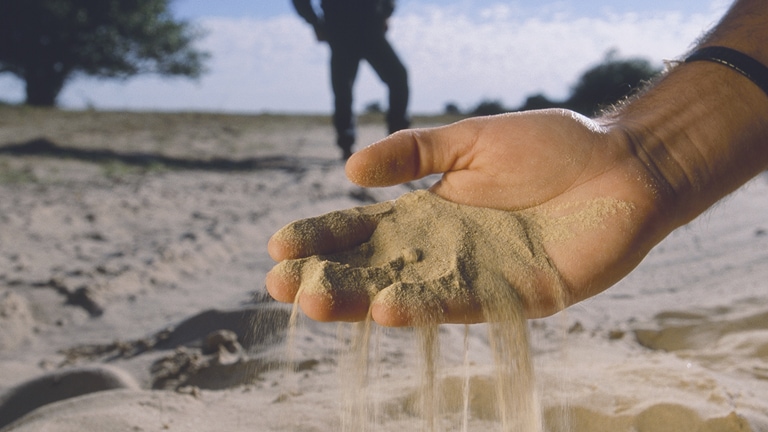 | |
|
|
|
ON GLOBAL FOOD SECURITY
A more efficient food system can build global resilience
|
|
|
|
|
|
|
|
|
|
|
|
A combination of factors is disrupting the global food supply. There have been other food crises in the past, but I think there are a couple of elements that make this different. We have more people to feed in a system that is global, but where there is more geopolitical constraint. And at the same time, emerging trends show a progressive increase of the risk of simultaneous breadbasket failure due to climate change.
There are six breadbaskets in the world. Combined, Ukraine and Russia are a big one. The region produces 28 percent of the world’s exported wheat and 15 percent of its corn. The current war in Ukraine has two implications. Besides being a region where you produce of lot of commodities, it’s also where some of the world’s fertilizer is produced. That’s contributed to the price of fertilizer going up, which impacts farmers’ ability to pay for those fertilizers, which can potentially have an impact on yield.
It’s happening at a time when grain stocks are relatively low in many countries. That’s because since 2020, we saw a spike in the price of agricultural commodities, and countries tend to deplete their stocks more aggressively when the price of commodities is high. The combination of relatively low stocks with a disruption in one of the breadbaskets has a further impact on price.
COVID-19 was a disruption to the food system mostly on a demand level, because people stopped going to restaurants and food service was mostly closed, and those areas are where a lot of fish and red meat are sold. That, in turn, had an impact on the demand for corn. Many people lost jobs, so they had less income, which also had an impact on demand. So, farmers adjusted to that lower demand. Then suddenly, some sectors reopened, creating a bit of a shock on demand.
Add to this an ongoing drought in India and in most places on the planet, including some of the breadbasket regions, for the past few months. That’s led to low production compared with the historical level.
|
|
| |
|
“There are six breadbaskets in the world. Combined, Ukraine and Russia are a big one. The region produces 28 percent of the world’s exported wheat and 15 percent of its corn.”
|
| |
|
So, there are currently more shocks to the food system than usual.
On July 22, an agreement was signed between Russia and Ukraine and the prices of some commodities have come down. But it only partly solves the problem as there are indicators that planted and likely harvested areas could be 15 to 25 percent lower than historical levels. Current conditions may not produce the same yield as in previous years. In Ukraine, emerging trends show that 30 million to 44 million fewer tons of row crops are likely to be produced in 2023 compared with a typical year. There is less insight into what is happening in Russia, but some of the companies providing seeds and crop nutrition may not be operating under ideal conditions.
What has not been planted has not been planted. No one can change that.
|
|
| |
|
Use energy as an analogy: the more energy efficiency you create, the more you create resilience in your energy system. The food system is very similar.
|
|
|
| |
| |
|
Nicolas Denis is a partner in McKinsey’s Brussels office. He advises government institutions on sustainable economic development and serves leading companies in agribusiness, fisheries, forestry, and biotech. |
|
| |
|
| | |
|
Kweilin Ellingrud on how Americans view their economic opportunities |
|
Americans are reporting more pessimism about their economic futures than in the past. Dig into the numbers and nuances of McKinsey’s latest American Opportunity Survey.
|
|
| |
| |
|
This email contains information about McKinsey’s research, insights, services, or events. By opening our emails or clicking on links, you agree to our use of cookies and web tracking technology. For more information on how we use and protect your information, please review our privacy policy. |
|
You received this email because you subscribed to our McKinsey Quarterly alert list. |
|
|
Copyright © 2022 | McKinsey & Company, 3 World Trade Center, 175 Greenwich Street, New York, NY 10007 |
|
|
|
|





